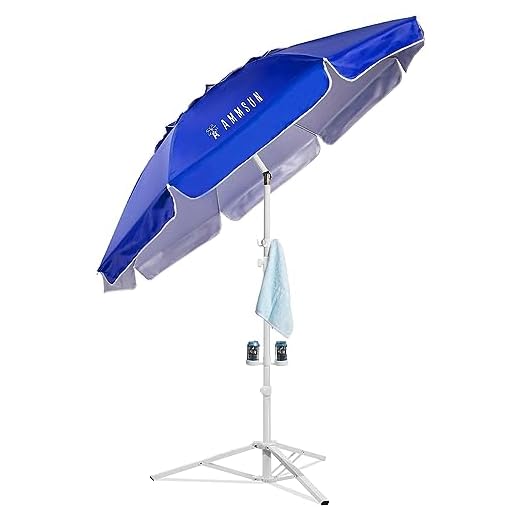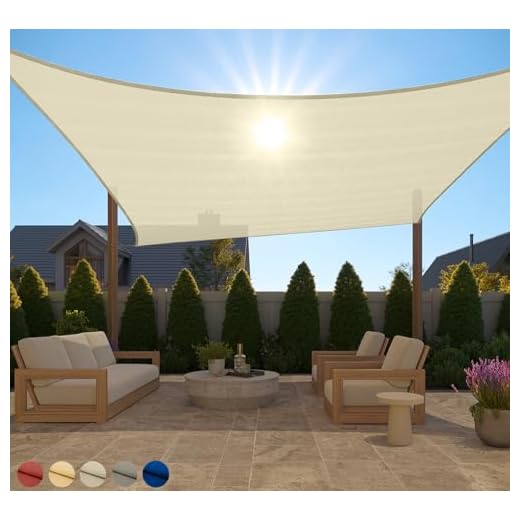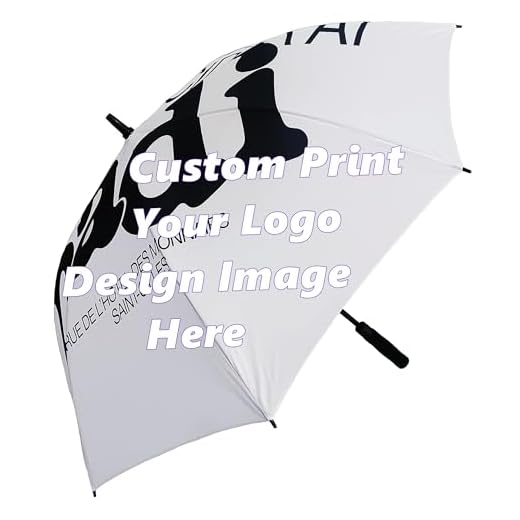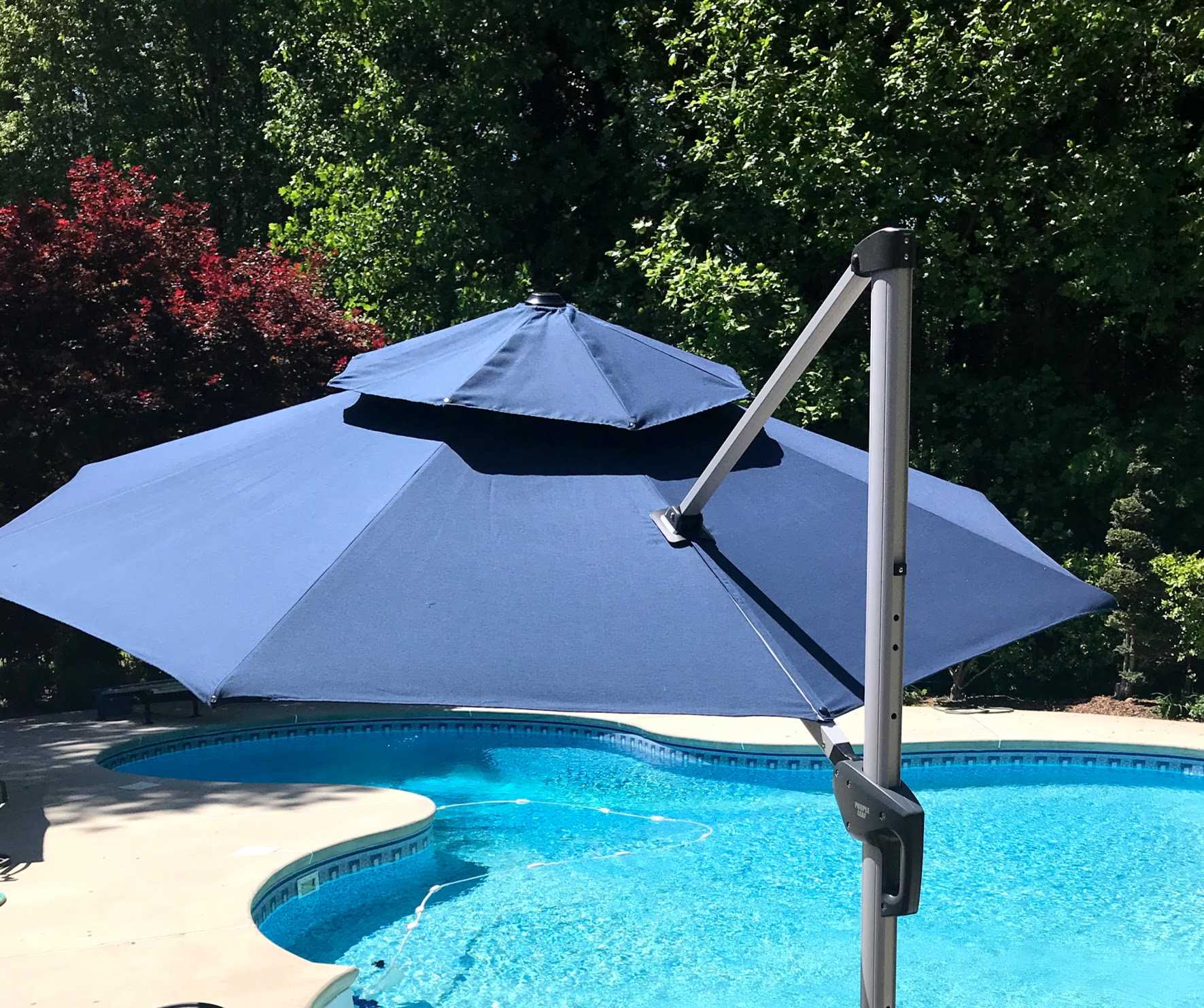




Neutral tones like beige or taupe are ideal for your outdoor covering, as they blend seamlessly with various landscapes and furnishings. These shades reflect sunlight efficiently while providing a soothing atmosphere for relaxation. Darker hues, such as navy or charcoal, can add a touch of elegance and sophistication, though they may absorb more heat.
This article is designed for homeowners and outdoor enthusiasts looking to enhance their outdoor spaces with the perfect shading solution. It will guide you through the advantages and disadvantages of different shades, helping you make an informed decision.
You will find insights on how color influences temperature and ambiance, practical tips on maintenance, and suggestions for coordinating with your existing decor. By the end, you will be equipped with the knowledge to select a covering that suits both your style and needs.
Choosing the Right Shade for Your Outdoor Canopy
Opting for a light hue, such as beige or soft white, can significantly enhance the overall ambiance of your outdoor space. These shades reflect sunlight effectively, keeping the area cooler and more comfortable for relaxation.
On the other hand, darker tones like navy blue or charcoal gray absorb more heat but offer a striking contrast against the water. This choice can create a dramatic effect, making the setup more visually appealing.
Factors to Consider
When selecting the perfect shade for your outdoor canopy, it is crucial to take several elements into account:
- Sunlight Reflection: Light shades reflect more sunlight, providing better protection from UV rays.
- Heat Absorption: Darker tones can become warmer, impacting comfort levels.
- Style Coordination: Choose a hue that complements your existing outdoor decor and furniture.
- Maintenance: Lighter fabrics may show dirt and stains more readily than darker ones.
Ultimately, the selection depends on personal preferences, desired aesthetics, and functional requirements. Balancing style and practicality ensures a delightful outdoor experience.
Impact of Color on Heat Absorption
Choosing a shade for shading structures can significantly influence temperature management. Darker hues absorb more sunlight, leading to increased heat retention. This phenomenon can create an uncomfortable environment beneath the canopy, making it less enjoyable for users.
In contrast, lighter shades reflect sunlight, resulting in lower heat absorption. Opting for such tones can help maintain a cooler area underneath, enhancing comfort during hot weather. Therefore, selecting the right hue can directly affect the usability of the shaded space.
Heat Absorption Dynamics
The science behind heat absorption is straightforward: light colors reflect light, while dark colors absorb it. This principle is especially relevant in outdoor settings where sunlight exposure is significant. Various materials and their finishes can also impact how much heat is absorbed.
- Light Colors: Reflect a majority of sunlight, helping to keep the space cooler.
- Darker Shades: Absorb more heat, which can lead to an increase in temperature under the structure.
For maximum comfort, choosing a lighter palette can be beneficial. To illustrate, consider the following table comparing temperature increases based on hue:
| Shade | Average Temperature Increase (°F) |
|---|---|
| White | 5 |
| Light Blue | 6 |
| Red | 10 |
| Black | 15 |
In conclusion, selecting a lighter hue contributes to a more pleasant environment. This choice can enhance the overall experience, especially during peak sunlight hours. Consideration of color can make a significant difference when enjoying outdoor spaces.
Choosing Shades that Complement Pool Aesthetics
Selecting hues that enhance the ambiance around your aquatic area is key to creating a cohesive look. Neutral tones such as beige or taupe can harmonize with natural surroundings, while shades of blue or teal can reflect the colors of the water, forging a seamless transition.
Consider the overall design scheme of your outdoor space. If vibrant tiles or decor dominate, opt for subtle tones to avoid overwhelming the area. Alternatively, if the surroundings are more muted, brighter shades can inject energy and liveliness.
Tips for Selecting the Right Shades
To ensure the selected hues complement the environment, keep these factors in mind:
- Material: Different fabrics reflect light differently. Darker materials may absorb heat, while lighter ones can remain cooler.
- Durability: Choose shades that resist fading from sun exposure, ensuring longevity.
- Style: Align the aesthetics with your existing furniture and decor for a unified appearance.
Experiment with combinations to find the perfect match. Swatches can help visualize how various tones interact with the environment.
| Shade Type | Effect |
|---|---|
| Light Blue | Reflects water, promotes tranquility |
| Earthy Brown | Grounds the space, adds warmth |
| Bright Red | Creates a bold statement, draws attention |
Ultimately, the choice of hues should resonate with personal taste while enhancing the overall aesthetic of the outdoor area.
Durability of Colors Under Sun Exposure
Choosing the right shade for a sunshade involves understanding how various hues react to prolonged sunlight. Some shades fade more quickly than others, impacting the overall aesthetic and functionality of the product. Darker tones tend to absorb more heat, which can accelerate fading, while lighter shades may reflect light but still show signs of wear over time.
Fading occurs due to UV radiation, which breaks down the chemical bonds in pigments. Selecting materials with UV-resistant coatings can significantly enhance longevity. Fabrics treated with such coatings maintain their vibrancy longer, making them a worthwhile investment.
Factors Influencing Color Durability
- Fabric Type: Synthetic materials like polyester or acrylic generally offer better resistance to fading compared to natural fibers.
- Treatment: Look for textiles treated with UV inhibitors or colorfast finishes that help mitigate fading.
- Exposure: The duration and intensity of sunlight exposure can drastically affect how colors hold up over time.
In selecting a hue, consider that certain tones, such as navy or deep green, may offer better longevity under harsh sunlight compared to brighter colors like yellow or red, which are prone to fading. Regular maintenance, including cleaning and storing during off-seasons, can also prolong the lifespan of the chosen shade.
Personalization Options for Unique Poolside Style
Selecting a custom shade option can significantly enhance your outdoor experience. Consider fabrics that complement your seating and surroundings, ensuring they harmonize with the overall aesthetic.
Explore various personalization features, including patterns, sizes, and accessories, to create a tailored look that reflects your style. Here are some ideas to inspire your selection:
- Patterns: Opt for bold prints or subtle textures that match your decor.
- Sizes: Choose dimensions that provide ample coverage without overwhelming the space.
- Accessories: Incorporate matching cushions or throws to add comfort and style.
Incorporating personal touches, such as monograms or themed designs, can elevate the appeal. Consider practical aspects as well, such as weather resistance and ease of maintenance, ensuring your investment lasts.
By thoughtfully selecting these elements, you can transform your outdoor area into a personalized retreat that showcases your unique style.
Best color for pool umbrella
Features
| Part Number | SKY6697 |
| Model | SKY6697 |
| Color | Navy Blue |
| Size | 10ft |
Features
| Part Number | AM76008 |
| Model | AM76008 |
| Color | Blue |
| Size | 6.5' |
Features
| Part Number | 4336583223 |
| Model | 4336583223 |
| Color | TAN |
| Size | 9 FT |
Features
| Part Number | 840316702430 |
| Color | Butter Cream |
| Size | 12' x 16' |
Features
| Part Number | CGU001 |
| Color | Custom Full Color Printing |
| Size | 55 inch |
Video:
FAQ:
What color should I choose for my pool umbrella to provide the best shade?
When selecting a color for your pool umbrella, darker shades like navy blue, charcoal gray, or deep burgundy are often recommended for effective sun protection. These colors absorb more sunlight, reducing glare and creating a cooler shaded area underneath. However, lighter colors, such as white or beige, can reflect sunlight and keep the space feeling bright. Ultimately, the best choice depends on your personal style and the aesthetic you want to create around your pool area.
How does the color of a pool umbrella affect temperature?
The color of a pool umbrella can significantly impact the temperature of the shaded area. Dark colors absorb more heat, which might make the space warmer but can also reduce glare from sunlight. On the other hand, lighter colors reflect heat and light, leading to a cooler environment. If your primary concern is comfort, consider a lighter color for a more pleasant atmosphere during hot days. Keep in mind that the umbrella’s material also plays a role in insulation.
Are there specific colors that fade less in sunlight for pool umbrellas?
Yes, certain colors are more resistant to fading than others when exposed to direct sunlight. Generally, darker colors tend to fade faster due to their higher absorption of UV rays. Look for umbrellas made from UV-resistant fabrics in colors like taupe, dark green, or navy. These colors not only resist fading better but also maintain their appearance longer. Always check the manufacturer’s specifications for any claims about UV resistance and fading.
What colors are trending for pool umbrellas this season?
Current trends for pool umbrellas include bold, bright colors such as coral, teal, and mustard yellow. These shades can add a fun, lively touch to your outdoor space. Additionally, neutral tones like taupe and soft gray are popular for a more sophisticated look. Choosing trendy colors can enhance the overall aesthetic of your pool area and make it feel more inviting. Consider mixing and matching colors for a playful vibe or sticking to one color palette for a cohesive look.
How do I maintain the color of my pool umbrella over time?
To keep your pool umbrella looking vibrant, regular maintenance is key. Clean it periodically with mild soap and water to remove dirt and grime that can cause discoloration. Additionally, when not in use, store the umbrella in a shaded area or use a protective cover to shield it from the sun’s harsh rays. If your umbrella is made from fabric, consider using a UV protectant spray designed for outdoor fabrics to enhance its longevity and maintain its color.








